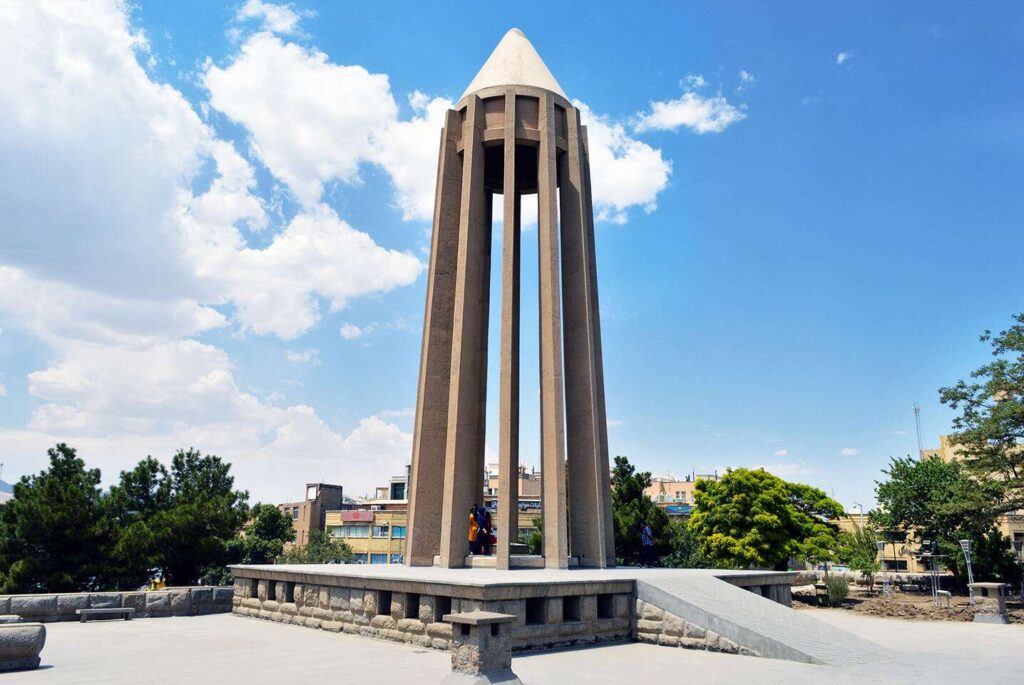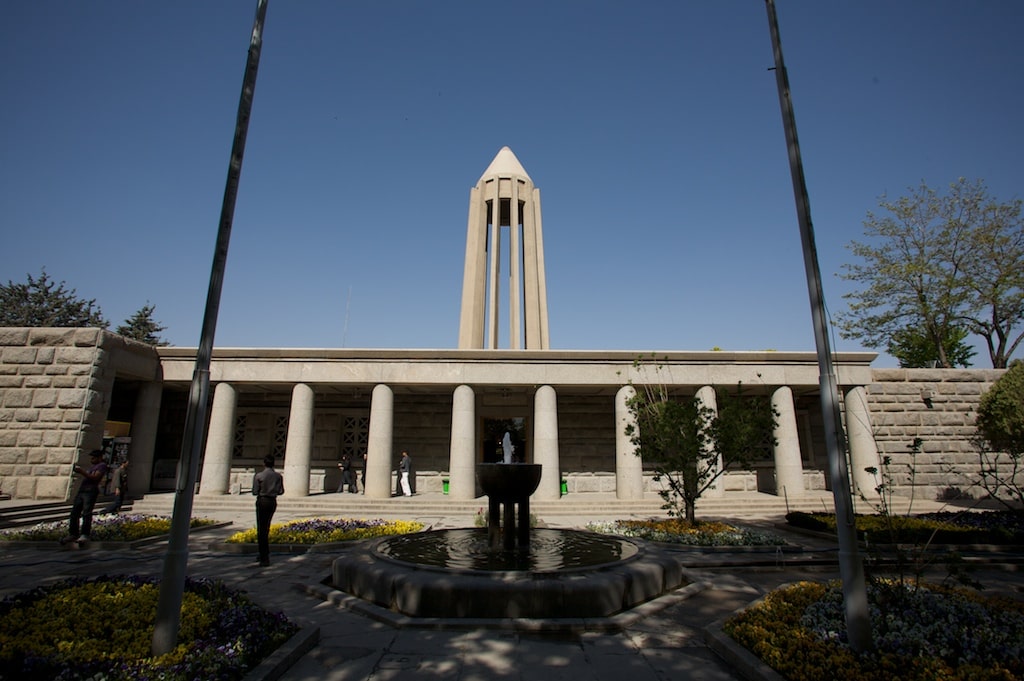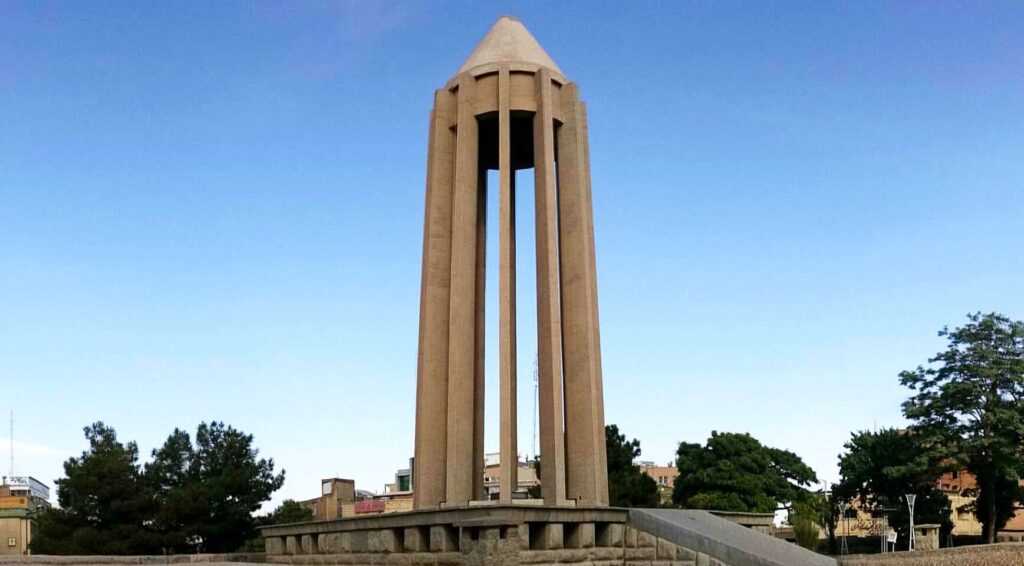Introduction to Avicenna Mausoleum
Great scientists and poets have lived in the world. Each of whom in some way, has made the world proud. For each of whom, a mausoleum has been built, which could become the symbol of a city. Meanwhile, Avicenna Mausoleum, a famous Persia philosopher, scientist, and physician, is located in one of the main squares of Hamadan. This structure is considered as a symbol of the city of Hamadan and one of the signs of Persia’s antiquity in world culture, knowledge, and science, which has made Avicenna’s fame in medicine and philosophy a global figure.

History Of Avicenna Mausoleum
Avicenna, a famous and well-known Persian physician and philosopher, lived in the fourth century AH. Among the people, he was called the omniscient because he was knowledgeable in many sciences of his time, such as mathematics, astronomy, physics, chemistry, psychology, geology and geography, poetry and literature, philosophy, and logic, and medicine. He is one of the most famous and influential philosophers and scientists in Persia whose works are impressive in the field of Aristotelian philosophy and medical science, and are considered as important sources of these sciences. The Book of Law is one of the most famous works in the history of his medicine, as George Sarten (Father of History) mentions Avicenna in his History of Science as one of the substantial medical scientists in the world.
Abu Ali Sina’s birthday is considered in the calendar as Doctor’s Day and Hamedan Day. When riots broke out at that time, he stayed at home and lost his life in those days. Because of the atmosphere in the city and him, being Muslim, he was buried in the yard of his friend’s house. Until the end of the thirteenth century, a small four-arched tomb was placed as a tomb. Over time, these four arches were destroyed and worn out.
During the Qajar rule, this building was rebuilt, and a brick dome was placed on Avicenna Mausoleum. Once again, a short wall was created around it. The monument we see today is built on the ruins of the previous one which, was created by the National Monuments Association of Persia in 1330 and inaugurated in 1333 with command of Mohammad Reza Shah Pahlavi on the occasion of the thousandth anniversary of the birth of this great scientist.

Architecture of Avicenna Mausoleum
Avicenna Mausoleum is a combination of two architectural styles of ancient Persia and post-Islamic Persia. The tomb tower inspired by the Qaboos dome tower and the gardens built in the area of this tomb are also examples of Persian gardens. The existing fountains are influenced by traditional house ponds that are made of Alvand mountain granite, the facade of which has created a spectacular splendor in Hamedan. The architect of Avicenna Mausoleum in Hamedan was Engineer Seyhoun, who used new technologies in its construction.
One of the differences between the appearance of Avicenna Mausoleum and Qaboos Dome is the number of columns that can be seen in the two buildings. The Qaboos Dome has ten columns and the Avicenna Mausoleum has twelve columns, of which the twelve columns of the tomb represent the 12 sciences that Avicenna dominated over all of them in his time. The second difference is in the distance between the columns. The boundaries of the columns in the building of this tomb are open, but this distance can be seen in the dome of Qaboos completely covered and closed. In terms of dimensions, these two buildings are different; Avicenna Mausoleum is almost half the size of the Qaboos dome.

Different parts of the Tomb
Tombs
After visiting Avicenna Mausoleum, another tomb that you can visit is the tomb of Abu Sa’id Dakhduk, a friend of Avicenna, located on the left side of his. Also, in the eastern courtyard of the tomb is the tomb of Abolghasem Qazvini.
Library
One of the most magnificent parts of the mausoleum is the library located next to the tomb of the Sheikh and the North Hall. It currently includes 8,000 volumes of exquisite Persian and foreign manuscripts and printed books, and booths related to the works of Abu Ali Sina and Hamedan poets and writers in it are there. About 30 volumes of books are in manuscript, and 590 volumes are in French, English, German, etc. There is also a complimentary space in Avicenna Mausoleum that complements the library. This building is a semicircular garden with green space, in which the statue of Abu Ali Sina, with a book in his hand, is installed on the eastern side of the square.
Avicenna Museum
This Museum was built to preserve coins, pottery, bronze, and other objects discovered in the area, which date back thousands of years to the Islamic era. This museum has been located in the south hall of the tomb since 1330. One of the most interesting things in this museum is a photograph of the skull of Avicenna, which was allegedly recorded during the destruction of the old tomb.

